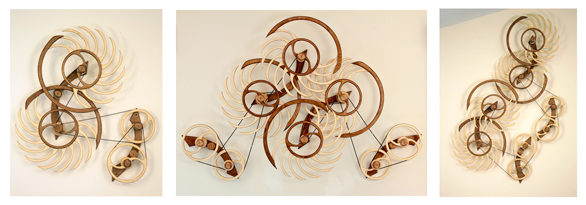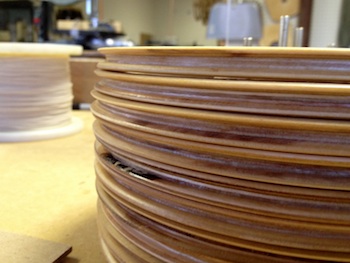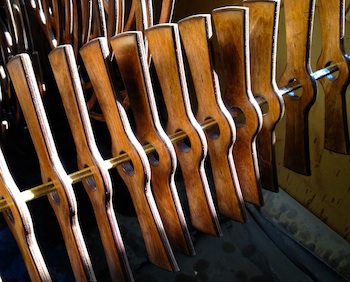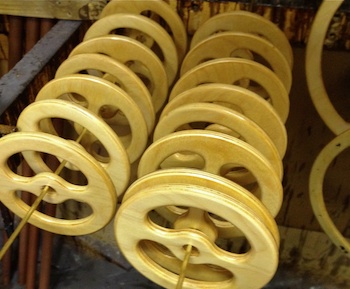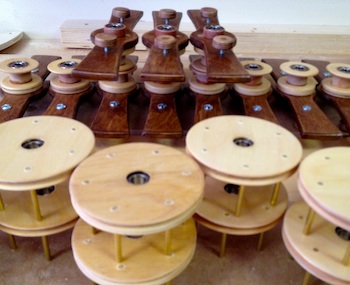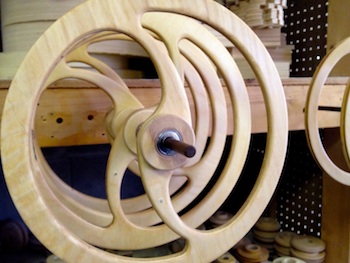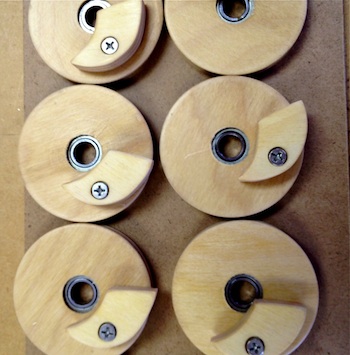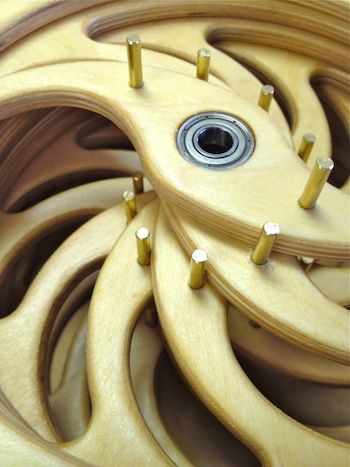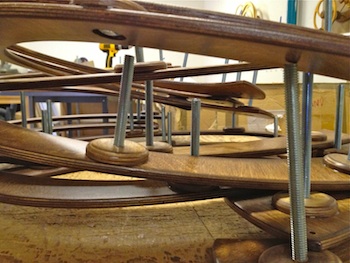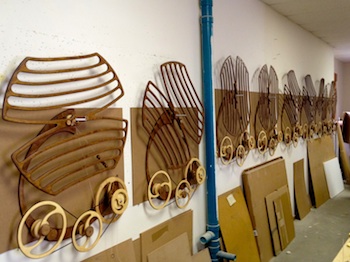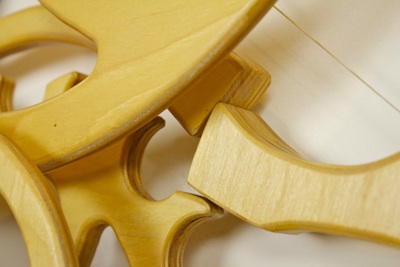My tools for designing kinetic sculptures continue to evolve. For years I have been designing on a a 50 pound MacPro behemoth with a 30" display. I needed the horse power to render my animations quickly and to make videos. I thought I needed a big screen. With the evolution of more powerful laptops with beautiful displays like the Retina Macbook Pro I have changed my tool of choice. I moved out of my office, sold my desktop setup and bought a laptop. I can now do my designing wherever I can take my laptop. My favorite locatio is sitting up in the gallery space at my studio, often sitting on the sofa enjoying a cup of tea or coffee with Silver Symphony ringing gently in the background. This is a wonderful solution except when I need to be working on two computers at once.
I have a physics program (Working Model) I use for center of mass calculations. It only runs on "ancient" Mac system 9, that in turn, only works on old Macs. . When I need to figure out a center of mass, I work between this program on a 10 year old iBook and Illustrator on new Macbook Pro. I can't balance the two laptops (and my tea) on the sofa. I asked Marji to think about designing a desk for the gallery. I had an old, beat-up press board folding table that just didn't fit in.
This week, she finished my new desk and it is wonderful!

My "office space" is located in the kitchen area of the gallery space. It is open and visible to the gallery so I requested that the desk be artsy yet functional. Marji thought using a live-edge slab of wood would create a perfect desk. I can sit up high, gaze out the windows and dream. It's a great place to work.
Marji has posted a couple of blog posts over on her blog, AshbeeDesign.com about this desk and how we made it. Take a look at these two posts:
Here are a few detail shots.
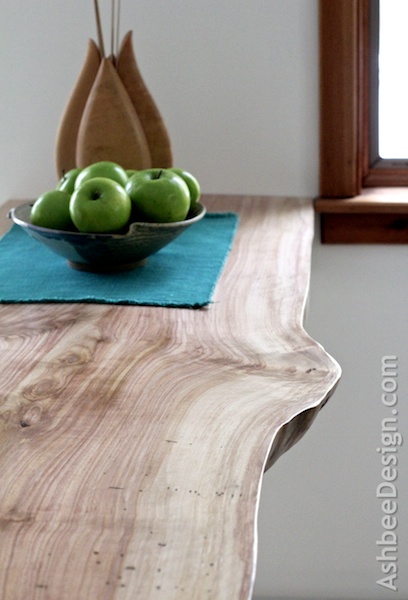
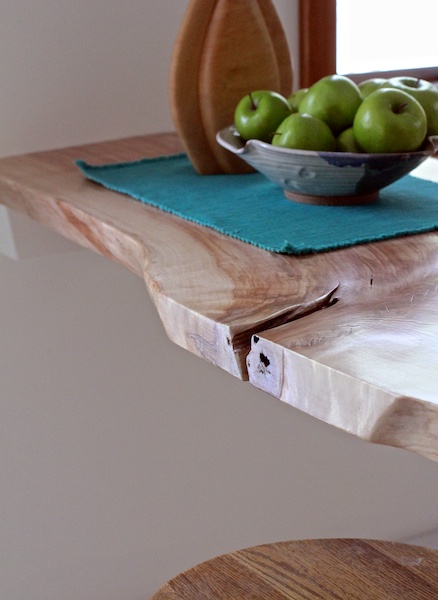
It's perfect!


